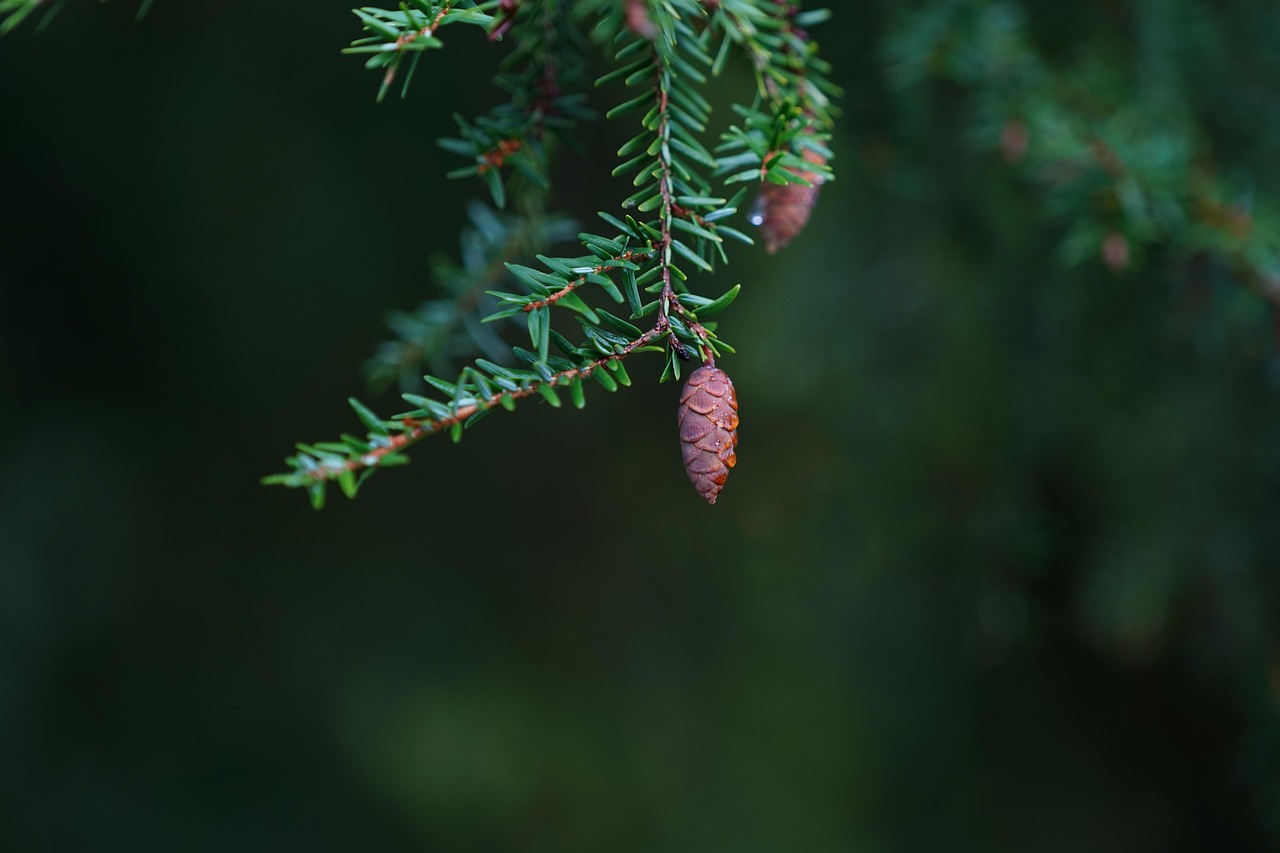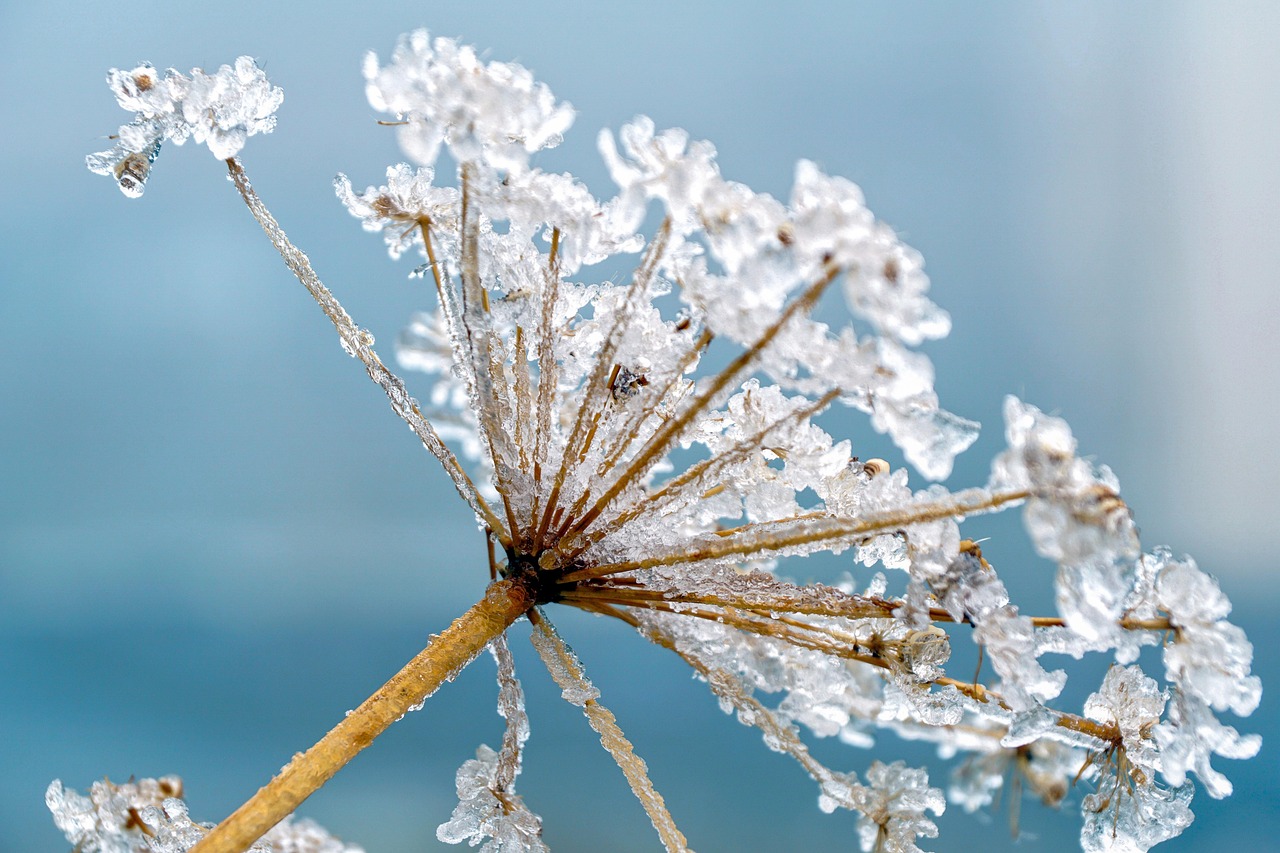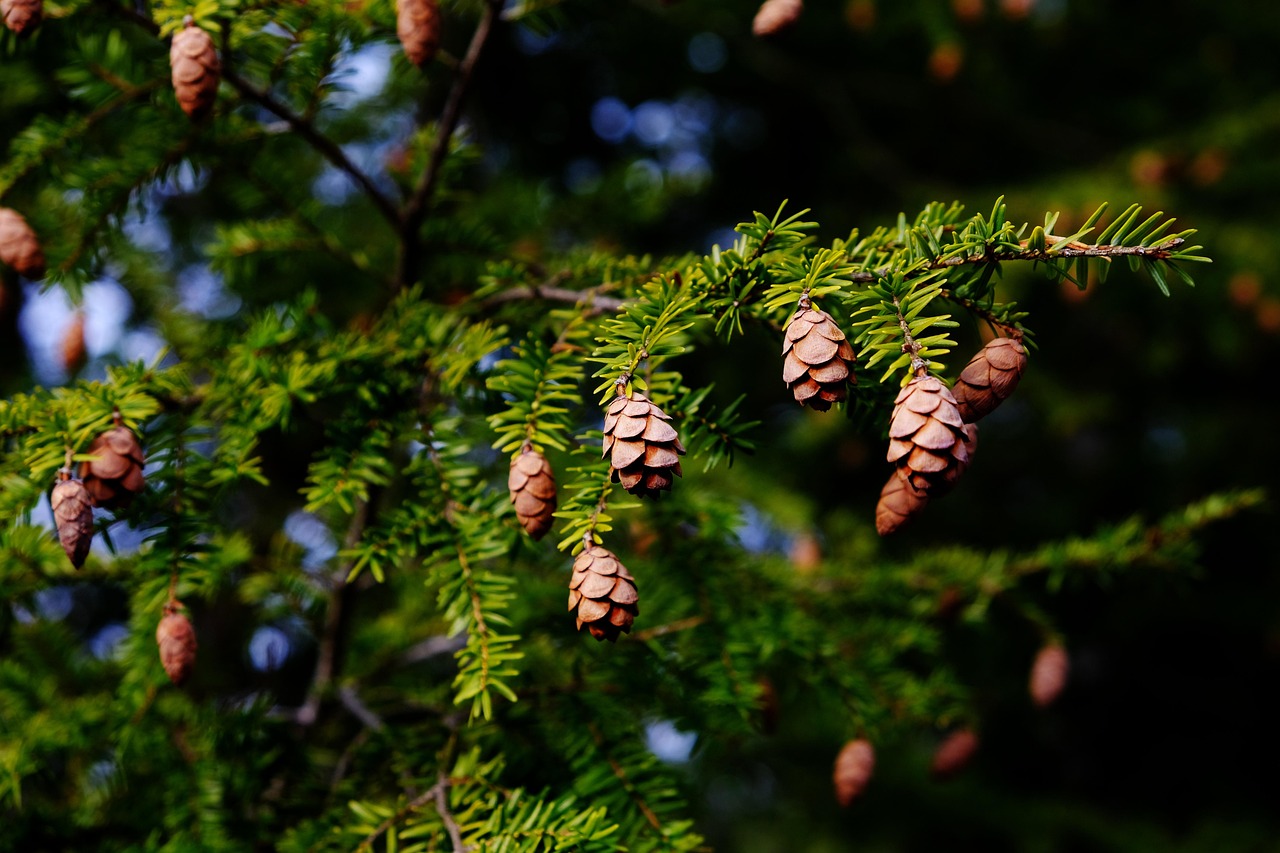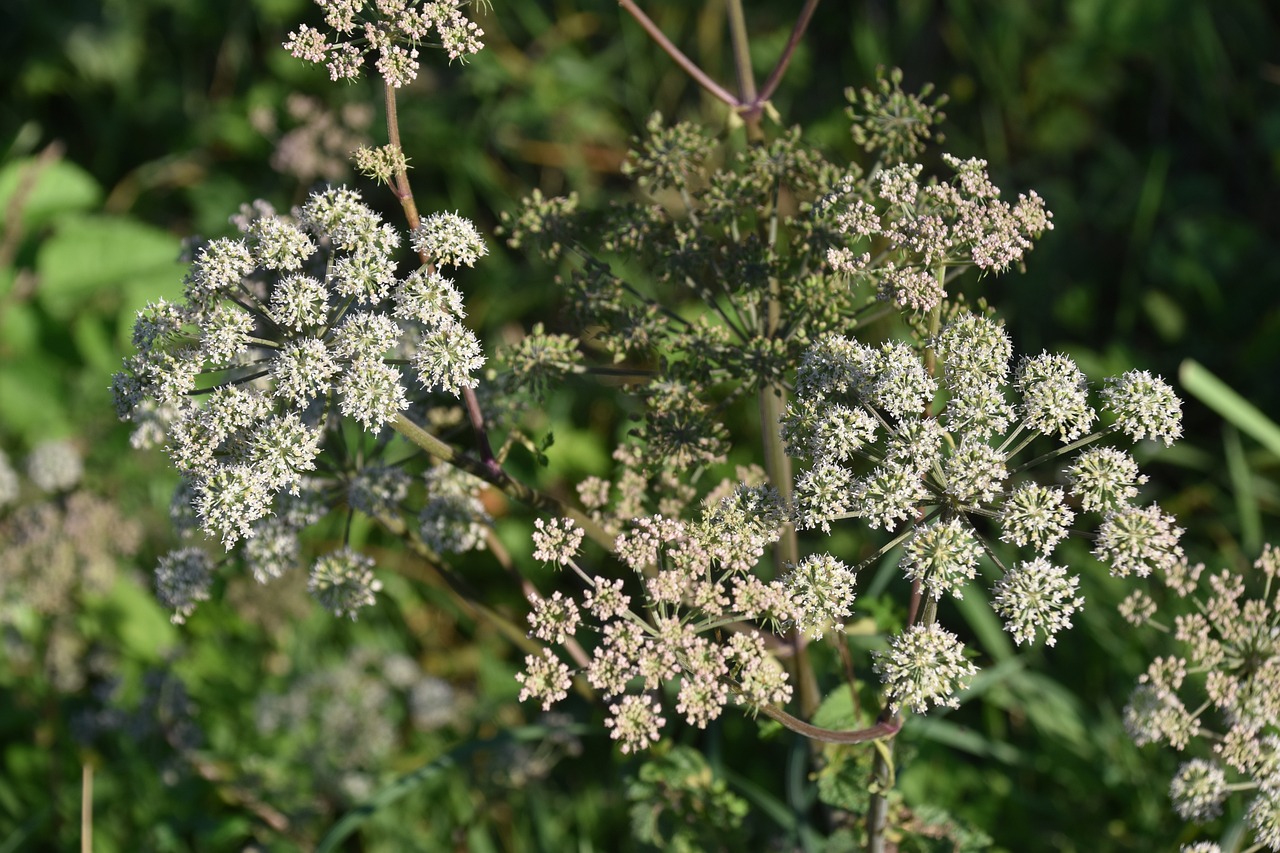The Western Hemlock and Eastern Hemlock are two distinct species of trees that differ primarily in their habitat, size, and needle characteristics. The Western Hemlock thrives in the Pacific Northwest and can grow taller than its Eastern counterpart, which is primarily found in the eastern United States and is generally smaller.
Understanding Hemlock Trees

Hemlock trees belong to the genus Tsuga, known for their graceful appearance and importance in forest ecosystems. They are coniferous trees that produce small cones and have needle-like leaves. Both Western and Eastern Hemlocks play significant roles in their respective environments. They provide habitats for various wildlife and contribute to forest stability.
The Western Hemlock (Tsuga heterophylla) is predominantly found along the Pacific Coast, from Alaska down to California. It thrives in moist, temperate rainforests where it can grow to impressive heights. In contrast, the Eastern Hemlock (Tsuga canadensis) is native to the eastern regions of North America, favoring cooler, mountainous areas and often found in mixed hardwood forests.
Physical Characteristics
Physical differences between the two species are notable. The Western Hemlock typically reaches heights of 70 to 100 feet and can occasionally exceed 200 feet. It has a broad, conical shape with drooping branches. The needles of the Western Hemlock are flat, approximately 1 inch long, and vary in color from dark green to light green.
On the other hand, the Eastern Hemlock is usually shorter, growing between 40 to 70 feet tall. Its growth habit is more upright compared to the Western variant. The needles of the Eastern Hemlock are also flat but are shorter, measuring about 0.5 to 1 inch long, with a rich green color on top and a lighter color underneath.
Habitat Preferences
The habitat preferences of these two species also diverge significantly. The Western Hemlock thrives in rich, moist soils usually found in coastal rainforests. It prefers areas with high rainfall and moderate temperatures but can adapt to various soil types. Due to its size and growth requirements, it often becomes a dominant species in its habitat.
Conversely, the Eastern Hemlock favors cooler climates found in the northeastern U.S. and Canada. It often grows in shaded locations undercanopy trees, where it can thrive in moist, well-drained soils. This tree species is particularly known for its ability to tolerate shade, making it an essential part of the understory in many eastern forests.
Ecological Importance
Both species of hemlock trees play vital roles in their ecosystems. They provide shelter and food for a variety of wildlife. Birds, mammals, and insects rely on these trees for habitat and sustenance. Additionally, hemlocks help maintain soil stability, preventing erosion and contributing to water quality.
| Feature | Western Hemlock | Eastern Hemlock |
|---|---|---|
| Height | 70-100 feet | 40-70 feet |
| Needle Length | 1 inch | 0.5-1 inch |
| Habitat | Pacific Northwest | Eastern U.S. and Canada |
| Growth Form | Broad conical shape | More upright |
Understanding these differences is crucial for conservation efforts as both species face threats from environmental changes and pests. Protecting their habitats is essential for maintaining biodiversity and the health of forest ecosystems across North America.
Growth Conditions and Requirements
Understanding the growth conditions and requirements of Western and Eastern Hemlock trees is essential for anyone interested in planting or conserving these species. Each tree has specific needs that affect its health, growth rate, and longevity.
Soil Preferences
Both species of hemlock prefer well-drained soils, but they exhibit some differences in their soil preferences:
- Western Hemlock: Thrives in rich, moist, and acidic soils typically found in coastal regions. It benefits from organic matter, allowing for better root development.
- Eastern Hemlock: Prefers acidic, well-drained soils often found in hilly or mountainous areas. It also tolerates lower fertility levels than its western counterpart.
The pH level of the soil can significantly impact the growth of both tree species. Hemlocks generally prefer soils with a pH between 4.5 and 6.5. Soil testing can help determine suitability for planting.
Light Requirements
Light exposure plays a critical role in the development of hemlock trees. Their light requirements differ:
- Western Hemlock: Prefers partial shade but can also tolerate full sun, especially during its early years. However, too much direct sunlight can hinder its growth.
- Eastern Hemlock: Highly tolerant of shade, this species is often found growing beneath larger trees. It can thrive in low-light conditions, making it suitable for understorey plantings.
Watering Needs
Water availability is crucial for the growth of hemlock trees. Both species require sufficient moisture, but their tolerance levels vary:
- Western Hemlock: This species needs consistent moisture, particularly during dry spells. It is sensitive to drought conditions and will show signs of stress if the soil becomes too dry.
- Eastern Hemlock: While it also prefers moist conditions, Eastern Hemlock is slightly more drought-tolerant than its western relative. However, prolonged drought can still adversely affect its health.
Pests and Diseases
Both Western and Eastern Hemlocks face threats from various pests and diseases that can impact their longevity and health.
Common Pests
Pest infestations can lead to significant damage in hemlock trees. Some common pests include:
- Hemlock Woolly Adelgid: A major threat to both species, this invasive insect feeds on the sap of hemlocks, leading to needle loss and tree decline.
- Eastern Pine Beetle: Primarily affects Eastern Hemlocks, causing bark damage and potential tree mortality.
Disease Susceptibility
Pests often introduce diseases that can further harm hemlocks. Some notable diseases include:
- Root Rot: Caused by various fungi, this disease affects tree stability and health. Western Hemlocks are particularly susceptible in poorly drained soils.
- Needle Cast: This fungal disease leads to premature needle drop, impacting both species but often more prevalent in Eastern Hemlocks.
Preventive measures such as maintaining proper tree health, adequate spacing, and monitoring for pests are vital for managing these threats effectively.

Cultural Significance and Uses
Both Western and Eastern Hemlocks hold cultural significance and have practical uses that extend beyond their ecological roles.
Cultural Importance
In various indigenous cultures, hemlocks have been used for medicinal purposes, construction, and ceremonial practices. They are often symbols of strength and endurance due to their resilience in forest ecosystems.
Commercial Uses
The timber from both species is valuable in construction and woodworking industries due to its strength and workability:
- Western Hemlock: Often used for framing, flooring, and furniture due to its attractive grain and durability.
- Eastern Hemlock: Commonly utilized for building materials and landscape timbers. It is also used in traditional crafts.
The wood’s natural resistance to decay makes it a preferred choice for outdoor use.
Conservation Efforts and Threats

Both Western and Eastern Hemlocks are facing numerous challenges that threaten their populations and habitats. Understanding these threats is essential for effective conservation efforts.
Major Threats to Hemlock Trees
Hemlocks are vulnerable to various environmental changes and human activities. Some of the primary threats include:
- Climate Change: Alterations in temperature and precipitation patterns can significantly impact hemlock growth and survival. Warmer temperatures may shift suitable habitats northward, threatening populations in traditional ranges.
- Pest Infestations: Invasive species, particularly the Hemlock Woolly Adelgid, pose a severe risk to both species. These pests weaken trees and can lead to widespread mortality if not managed properly.
- Disease: Fungal diseases, such as root rot and needle cast, are exacerbated by climate stressors and can devastate hemlock populations.
- Deforestation: Logging and land development reduce hemlock habitats, leading to fragmentation and isolation of tree populations.
Conservation Strategies
To address these threats, several conservation strategies are being implemented. These include:
- Monitoring Programs: Regular assessments of hemlock populations help identify trends in health and distribution, enabling timely interventions.
- Pest Management: Integrated pest management practices aim to control invasive species without harming native ecosystems. This may include biological controls, insecticides, or promoting natural predators.
- Habitat Restoration: Efforts to restore degraded habitats can support hemlock recovery. This includes replanting native species and controlling invasive plants that compete for resources.
- Public Education: Raising awareness about the ecological importance of hemlocks encourages community involvement in conservation initiatives and promotes sustainable practices.
Role in Ecosystems
Both Western and Eastern Hemlocks play critical roles in their respective ecosystems. Their contributions extend beyond providing timber and aesthetic value.
Biodiversity Support
Hemlocks are integral to maintaining biodiversity within forest ecosystems. They provide habitat and food sources for various wildlife species:
- Birds: Many bird species rely on hemlocks for nesting sites and cover. The dense foliage offers protection from predators.
- Mammals: Species such as deer and small mammals utilize hemlocks for food and shelter. The trees’ needles are a food source during harsh winters.
- Insects: Hemlock trees support diverse insect populations, which are essential for pollination and serve as food for higher trophic levels.
Water Quality Improvement
Hemlocks contribute to water quality in forested environments. Their dense root systems help stabilize soil, reducing erosion and sediment runoff into streams and rivers. Additionally, they provide shade that maintains cooler water temperatures, which is crucial for aquatic life.
Carbon Sequestration
As large trees, hemlocks play a significant role in carbon sequestration. They absorb carbon dioxide from the atmosphere, contributing to climate change mitigation efforts. Protecting hemlock forests therefore aids in global efforts to reduce greenhouse gas concentrations.
Landscaping and Ornamental Uses

In addition to their ecological contributions, both Western and Eastern Hemlocks are popular choices for landscaping and ornamental purposes. Their aesthetic appeal adds value to gardens and parks.
Ornamental Features
Their graceful appearance makes hemlocks suitable for various landscaping applications:
- Specimen Trees: Hemlocks can be planted individually as focal points in gardens due to their tall stature and lush foliage.
- Hedges: The dense growth habit of Eastern Hemlocks makes them excellent choices for privacy hedges or windbreaks.
- Shade Trees: Their broad canopies provide ample shade, making them ideal for larger properties where shade is desired during hot months.
Incorporating hemlocks into landscaping not only enhances beauty but also promotes environmental sustainability by supporting local ecosystems.
Additional Considerations for Hemlock Management
As we explore the significance of Western and Eastern Hemlocks, it is important to consider responsible management practices to ensure their sustainability. Proper care can enhance their longevity and ecological contributions.
Pruning and Maintenance
Regular maintenance is crucial for maintaining the health of hemlock trees. Pruning can help improve air circulation and sunlight penetration, which are essential for overall tree health:
- Removing Dead or Diseased Branches: This practice prevents the spread of disease and promotes healthy growth.
- Encouraging Airflow: Thinning out dense areas of foliage allows for better airflow, reducing the risk of fungal infections.
- Seasonal Timing: Pruning should ideally be done in late winter or early spring before new growth begins, minimizing stress on the trees.
Soil Health and Fertility
Maintaining soil health is vital for the growth of hemlocks. Regular soil testing can help determine nutrient needs:
- Organic Matter Addition: Incorporating compost or mulch can enhance soil fertility and moisture retention.
- pH Adjustment: If soil pH is outside the preferred range, amendments can be added to create a suitable environment for hemlocks.
Final Thoughts
The Western and Eastern Hemlocks are remarkable trees that not only enhance the beauty of landscapes but also play crucial roles in their ecosystems. Their unique characteristics, growth requirements, and ecological significance highlight the need for careful consideration in conservation and management efforts.
Understanding the differences between these two species enables better decision-making for landowners, conservationists, and landscape designers. Both hemlocks contribute to biodiversity, support wildlife, and improve water quality in their respective habitats.
As we face challenges such as climate change and invasive pests, promoting awareness and implementing effective conservation strategies becomes increasingly important. By protecting these majestic trees, we help sustain our forests and the myriad life forms that depend on them.
Incorporating hemlocks into our landscapes not only enhances aesthetic value but also fosters a commitment to environmental stewardship. As we plant and nurture these trees, we contribute to a healthier planet for future generations.
Through informed practices and community involvement, we can ensure that both Western and Eastern Hemlocks thrive, continuing to enrich our natural world.
